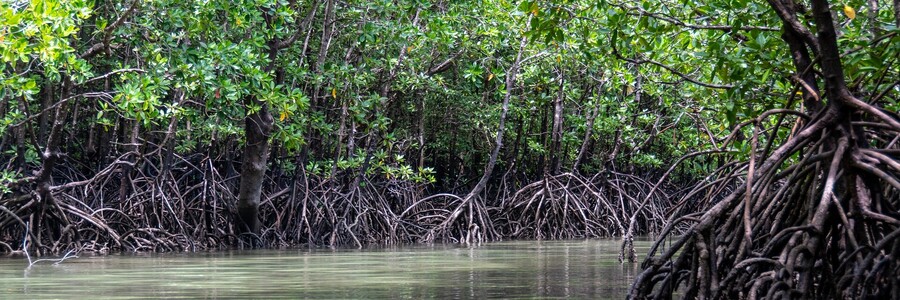New study shows ecosystems particularly worthy of protection
Also this year, the deforestation of the Brazilian rainforest reached a new record high, the space research agency INPE recorded in its satellite data a deforested rainforest area of 13,235 km2, which was deforested from August 2020 to July 2021. This means that the deforestation of the Amazon rainforest has increased by 22% compared to the previous year.
This is also alarming in view of a recent study by Conservation International, which identifies the carbon storage of terrestrial, coastal and freshwater ecosystems according to the criteria of the ability to be influenced by direct human action, the extent of carbon loss in the event of disturbance and the recoverability of carbon stocks after loss.
The result of the study shows ecosystems with irretrievable carbon storage. In other words, carbon whose release can be influenced by humans and whose mass in the ecosystems is so high that the carbon could not be recaptured if released by 2050. According to the study, half of the irretrievable carbon on Earth is concentrated on only 3.3% of the land surface. These reserves of carbon are equivalent to 15 times the fossil fuel emissions released globally last year and are therefore essential to protect.
The Amazon rainforest has also been identified as one of the ecosystems containing large amounts of irretrievable carbon. In addition, mangroves, tropical forests and peatlands as well as virgin forests in temperate latitudes are among the most important ecosystems. Across all ecosystems, the highest concentrations of irretrievable carbon are found in mangroves with an average of 218 tonnes per hectare, tropical peatlands with an average of 193 tonnes per hectare and boreal wetlands with an average of 173 tonnes per hectare.
Carbon should remain in ecosystems
Since 2010, agriculture, deforestation for beef, palm oil, soy and wood fibre, and forest fires have caused emissions of at least four gigatonnes of irretrievable carbon, carbon that cannot be offset or reabsorbed by 2050. The rest of the irretrievable carbon is also at risk from land use change and climate change.
Currently, 23% of irretrievable carbon is in protected areas and 33.6% is managed by indigenous peoples and local communities. The 52% of critical ecosystems that are currently not yet protected therefore urgently need protection measures to ensure that the carbon remains in the ecosystems.
This is precisely where our conservation projects come in: Helping nature, the climate and local people in a triad, creating long-term perspectives and not only reforesting destroyed forest but also preserving still intact forest by buying land for nature and creating protected areas. Because: maintaining ecosystems is one of the most important means in the fight against climate change.
Source:

